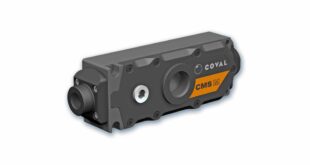Water extraction from boreholes is a common source of raw materials for drinks manufacturers as well as water utility companies.
In all cases, monitoring water quality is very important, both pre and post treatment, and the frequency of tests establishes the confidence in the data.
Bürkert’s Type 8905 Online Analysis System offers continuous monitoring of various water parameters with minimal intervention or maintenance.

Boreholes offer a valuable local water source, offering businesses an independent resource over which they have control in terms of taste and quality.
For utilities, boreholes are a major source of raw water, but their dispersed locations can represent a challenge for those involved in testing for water quality, and locations are quite often left unattended for extended periods of time.
Furthermore, boreholes can be affected by rainfall and local agricultural activities, making regular testing all the more important.
Water authorities have a responsibility to deliver treated water within strict specifications, making regular quality analysis both before and after treatment, an important asset.
Improving on current practice
One of the most common processes for assessing water quality involves taking samples by hand and either analysing them on-site or taking them to a local laboratory for testing. This presents a number of challenges in terms of the speed with which changes can be made when a parameter goes beyond acceptable limits. For individual businesses, this can affect a significant batch of products and for utilities, an out-of-consent fine.
One of the most common processes for Bürkert aims to resolve these issues with the Type 8905 Online Analysis System, which offers a flexible specification and simple installation.
Capable of measuring turbidity, iron, chlorine, conductivity, oxidation reduction potential (ORP) and pH, using the same base unit, the 8905 offers simple operation and precision.
One of the most common processes for The unit is small to enable easy installation in an existing control cabinet, where it can be linked to the local telemetry to provide near real-time analysis of water quality.

The 8905 uses analysis cubes that are automatically calibrated when they are inserted into the base unit and carry out repeated testing as often as required.
Improved measurement accuracy
The key point in any water analysis process is repeatability, ie the accuracy of the results, which can be somewhat variable when the manual tests are carried out by different staff. This is especially true for low iron content volumes, which can be difficult to establish accurately. The 8905 can deliver accurate results down to 0.03 ppm by volume.
Tests carried out in the Netherlands showed where samples were measured before and after a filtration system was installed. The samples taken by hand were subject to considerable variation, compared to the continuous measurement provided by Bürkert’s iron sensor (MS06)..
Clearly the time between manual tests can allow spikes in a parameter to escape unnoticed, particularly if samples are only taken daily or even less frequently.
For Bürkert, iron content can be tested automatically, without human intervention every 30 minutes, allowing action to be taken quickly if the values exceed pre-set thresholds.
Furthermore, whereas some iron analysis equipment can require extensive maintenance interventions to keep it operational, the 8905 has almost no need of external support.
One of the major benefits to this system is its ability to test samples from two different locations, such as pre and post treatment. This enables any chemical dosing system to be optimised using a closed loop control system that would also reduce chemical costs. This also offers the capacity to identify situations where part of the treatment process has been overwhelmed or failed.
With the ability to identify the problem and communicate it with the wider control network, the 8905 also offers peace of mind.
Self-contained calibration
The on-board technology in the 8905 offers a range of precise testing solutions in a single, compact system. In addition, Bürkert has built in the cleaning and calibration processes necessary for a robust and reliable analysis system.
Depending on the parameters selected, there is little or no maintenance intervention required.
To help potential customers to appreciate the benefits of the Type 8905, Bürkert has made a number of units available for rental. This means that a trial unit can be installed and commissioned by Bürkert’s experts to the requirements of the business and assessed in terms of performance and accuracy.
 Engineer News Network The ultimate online news and information resource for today’s engineer
Engineer News Network The ultimate online news and information resource for today’s engineer





